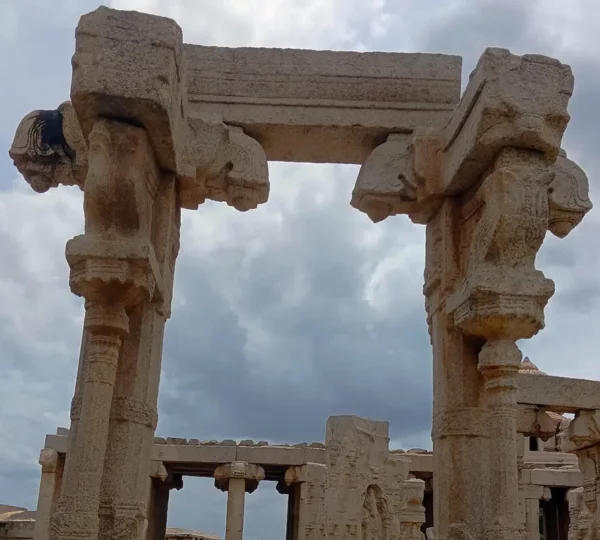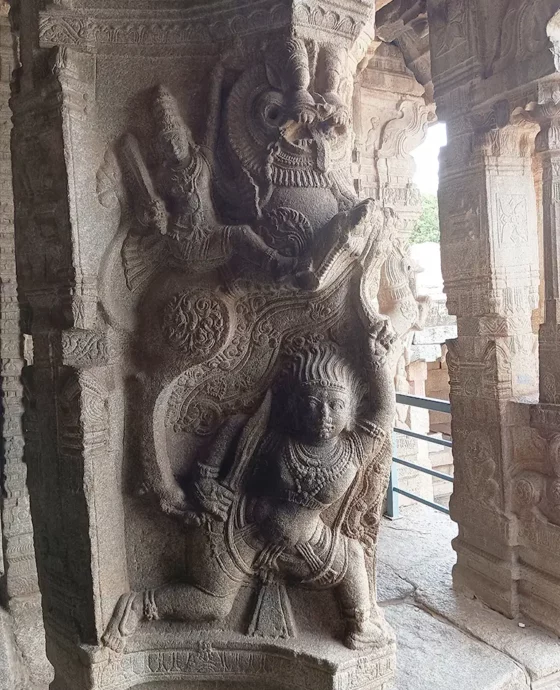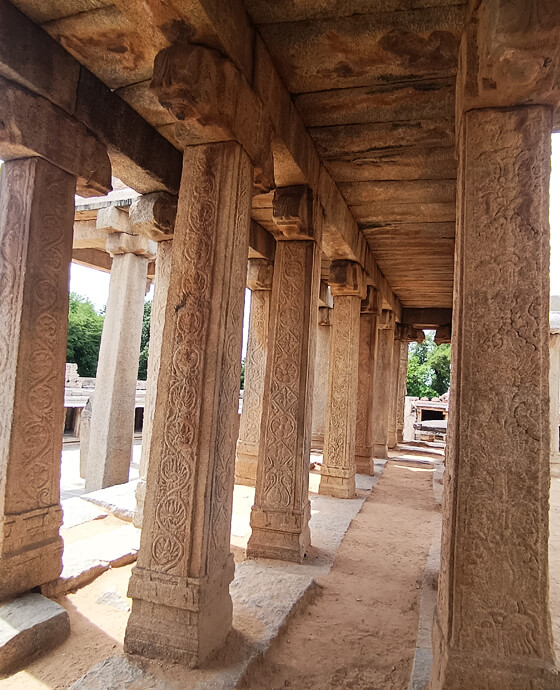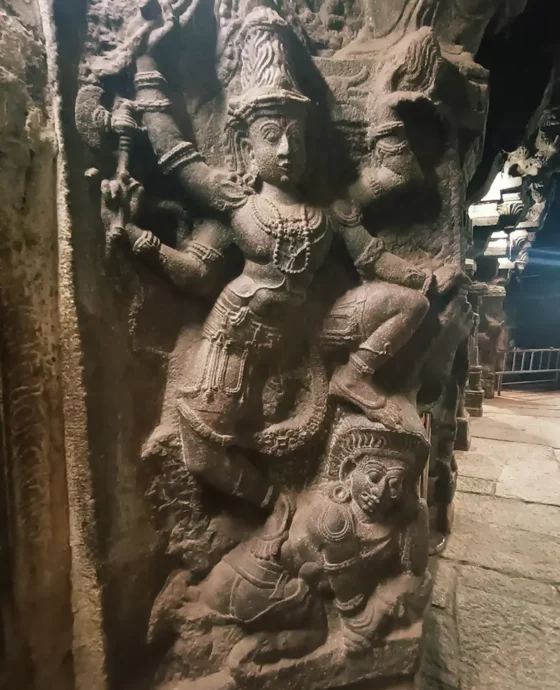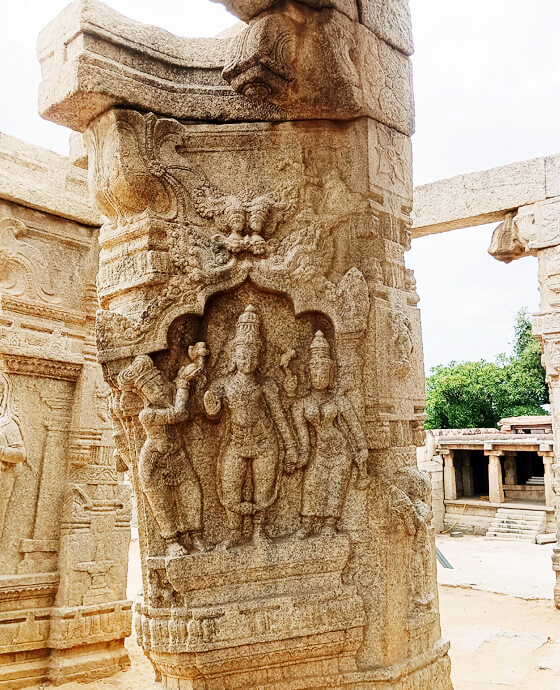Kalyana Mandapa Photogallery
The Kalyana Mandapa, nestled in the tranquil southwest corner of the inner enclosure at Lepakshi Temple, beckons you to explore its intriguing history and artistic marvels. This open-air structure stands tall upon a raised base, reaching a height of five and a half feet along its northern side. As you step inside, you’ll be greeted by an astonishing array of thirty-eight pillars, each with its unique story to tell.
These pillars come in three distinct varieties: some feature a single pillaret projecting elegantly, while others boast two pillarets projecting gracefully. The most captivating are the pillars adorned with substantial deity images carved onto projections of the shaft, each bearing witness to the divine union of Lord Shiva and Devi Parvati. These intricate carvings depict numerous sages, celestial beings, including Dhanvantari and the eight Dikpalakas, all gracing the pillars as esteemed guests to the divine nuptials.



Kalyana Mantapa: Where Legends Unfold
The Kalyana Mantapa, also known as the Marriage Hall, is an open structure located behind the temple’s main sanctum. It stands within the inner enclosure and is a visual treat for those who appreciate intricate stone carvings. As you step into this sacred space, you’ll be greeted by 38 resplendent pillars, each meticulously adorned with carvings that transport you to a world of sages, gods, Dhanwanthari, and the eight Dikpalakas.
A Glimpse of Divine Unions
Legend has it that the Kalyana Mantapa was constructed on the very spot where Lord Shiva and Goddess Parvati are believed to have entered into the sacred bond of marriage. The pillars of this mantapa beautifully depict this divine union. Carvings of Lord Shiva and Goddess Parvati, adorned in all their celestial glory, grace the stone pillars, allowing visitors to witness the divine wedding ceremony frozen in time.
Intriguing Pillar Varieties
These 38 pillars are a testament to the skill and creativity of the artisans of that era. They come in various styles, including those with one or two pillarets projecting and others featuring a big deity image carved on a projection of the shaft. Each pillar is a piece of art in itself, telling stories of celestial celebrations and the presence of revered sages and gods as honored guests.

Unjal Mandapa: An Architectural Marvel
Adjacent to the Kalyana Mantapa is the Unjal Mandapa, a place of great architectural significance. This mandapa is adorned with four tall pillars, each featuring Cola corbels. These pillars provide vital support to the roof, creating an elevated space for various ceremonies and rituals. The Unjal Mandapa is yet another architectural gem that showcases the diverse architectural styles within the Lepakshi Temple.
The Tale of Virupanna and the Unfinished Kalyana Mantapa
The Lepakshi Temple’s Kalyana Mantapa is not just a testament to artistry and devotion but also to a tragic legend. Virupanna, the royal treasurer, was accused of misappropriating treasury funds without the king’s consent. The enraged king ordered Virupanna to be blinded. Unable to bear the false accusation, Virupanna is said to have gouged out his own eyes and cast them against a temple wall. Two red spots, still visible on the wall, are believed to be the marks left by his bleeding eyes. The name “Lepa-akshi,” which also means “Blinded Eye,” is attributed to this tragic incident.
The Divine Footprint of Goddess Sita
As you walk past the Kalyana Mantapa, you’ll encounter a massive footprint on the temple floor. It is believed to be the footprint of Goddess Sita, marking the spot where she stepped while tending to the wounded Jatayu. According to legend, the footprint continued to exude water, which provided solace to the injured Jatayu until Lord Rama arrived. This mystical footprint is always wet, with the source of the water remaining a mystery. It is considered a divine reminder of the reverence bestowed upon the goddess.



